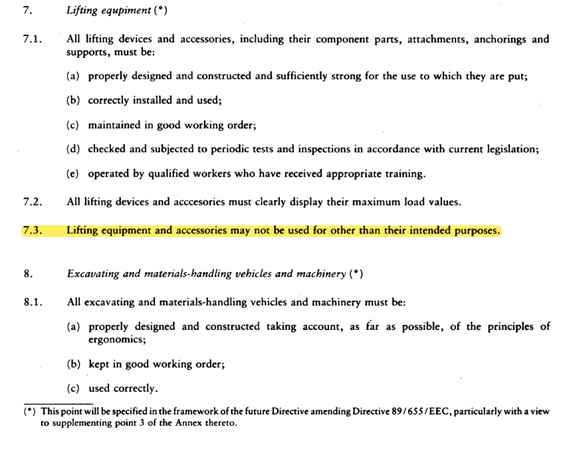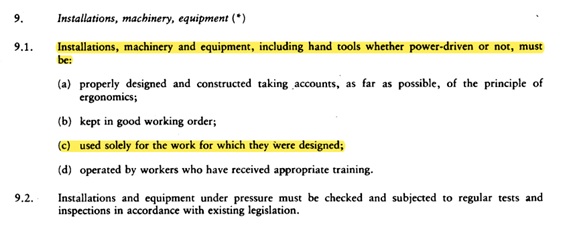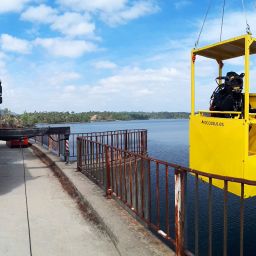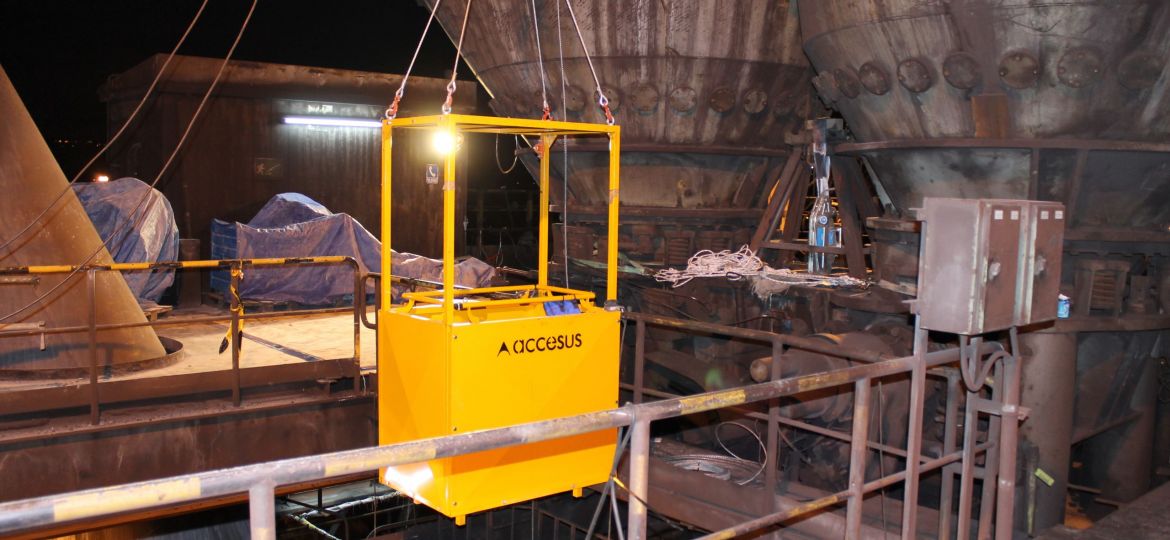
Many of you often ask us about the use of the Hanging Crane Basket.
Although it is a widely extended equipment that we can easily spot in construction sites and industry, there are many concerns regarding its use and application.
We previously explained whether Can a crane basket be CE-marked?
In this article, we will explain the regulatory use of this equipment, when we can use it, and when not.
REGULATORY FRAMEWORK OF THE SUSPENDED CRANE BASKET
We must ensure that the use of any work equipment and load-lifting equipment (such as lifting cranes), has been regulated by European Directive 2009/104/EC, which establishes the minimum health and safety provisions for the use of work equipment by workers.
In Annex I of Directive 2009/104/EC, we find the following clarifications:
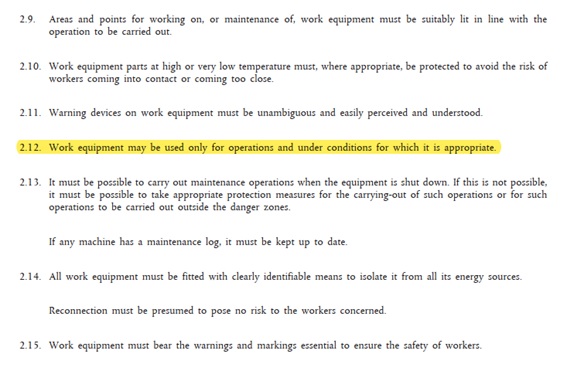
2.12. Work equipment may be used only for operations and under conditions for which it is appropriate.
a) The work equipment must not be used in a manner or operations or conditions contraindicated by the manufacturer. Nor can they be used without the protection elements provided for the performance of the operation in question. The work equipment may only be used in a manner or operations or in conditions not considered by the manufacturer if an evaluation of the risks that this would entail has been previously carried out and the pertinent measures have been taken for their elimination or control.
In Annex II of 2009/104/EC, we find the following clarifications:

3.1.2. Persons may be lifted only by means of work equipment and accessories provided for that purpose.
a) The elevation of workers will only be allowed by means of work equipment and accessories provided for this purpose.
In addition, in Council Directive 92/57/EEC, on the implementation of minimum safety and health requirements at temporary or mobile construction sites, we find other considerations.
In Annex IV, section II of PART B it is established that:
7. Lifting devices:
7.3. Lifting devices and accessories may not be used for other than their intended purposes.
9. Installations, machines, and equipment:
9.1. Installations, machinery, and equipment, including hand tools whether power-driven or not, must be:
c) used solely for the work for which they were designed.
From what we have seen so far, both European Directives prohibit the use of cranes to lift suspended baskets:
- The crane is a working equipment that hasn’t been designed for that purpose.
- We cannot use a crane, designed to lift loads, to lift people.
THERE ARE EXCEPTIONS FOR THE USE OF THE HANGING CRANE BASKET
In Annex II, Directive 2009/104/EC, cited above, the conditions that must be met are established when exceptionally, a work team (not planned for this purpose) must be used to lift people:
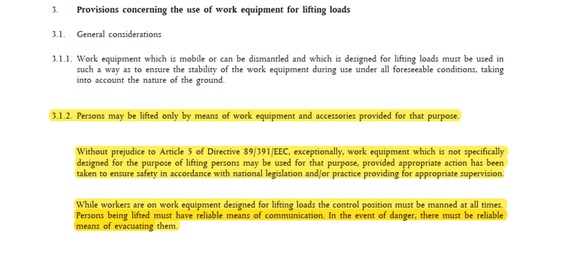
3. Provisions concerning the use of work equipment for lifting loads
3.1.2 Persons may be lifted only by means of work equipment and accessories provided for that purpose.
Without prejudice to Article 5 of Directive 89/391/EEC, exceptionally, work equipment which is not specifically designed for the purpose of lifting persons may be used for that purpose, provided appropriate action has been taken to ensure safety in accordance with national legislation and/or practice providing for appropriate supervision.
While workers are on work equipment designed for lifting loads the control position must be manned at all times. Persons being lifted must have reliable means of communication. In the event of danger, there must be reliable means of evacuating them.
Thus, we can exceptionally use a crane to lift a suspended basket with people. But what is exceptional use? Let us study the possible situations in the following point.
CONDITIONS OF EXCEPTIONAL USE OF THE CRANE BASKET
We cannot consider as exceptional conditions, those routines, repetitive or foreseeable operations, for which a customized solution can be planned and projected.
In these situations, it will always be safer to use a platform designed for this function, following a previously established work procedure, and supervised by a competent person.
Thus, they will NOT be cases of exceptionality:
- Lifting people from one level to another
- Repair of public or private lighting
- Access to storage areas for order preparation
- Manual handling of materials at height
- Installation, assembly, or dismantling operations at height
- Other work at height, even occasional, cleaning, maintenance, etc.

However, we could consider exceptional situations and, therefore, not routine, or repetitive, those in which:
- It is technically impossible to use the equipment for lifting people.
- The risks derived from the work environment are greater than those that would arise if we used machines for lifting loads adapted to lift people.
- There is an emergency. For example, the need to evacuate people or make an immediate repair to avoid a possible accident.
It is important to bear in mind that it will be the competent labor authority who has the power to define and/or authorize or not such exceptional use. In no case is the manufacturer of the equipment authorized to do so.
On the other hand, it is evident that in addition to using the equipment correctly, we must take all the appropriate security measures.
In future publications, we will tell you more about suspended crane baskets and what safety measures we should consider for their use.
ABSTRACT
What does the regulation say?
- We cannot use a basket suspended from cranes for routine or repetitive work.
- It will only be possible to use it in an exceptional way.
What does exceptional use mean?
- When it is technically impossible to use another solution.
- That the risks derived from not using the suspended basket are greater than using another solution.
- The moment there is an emergency.
If you have any questions about this post or want to participate in this line of debate, do not hesitate to contact us!
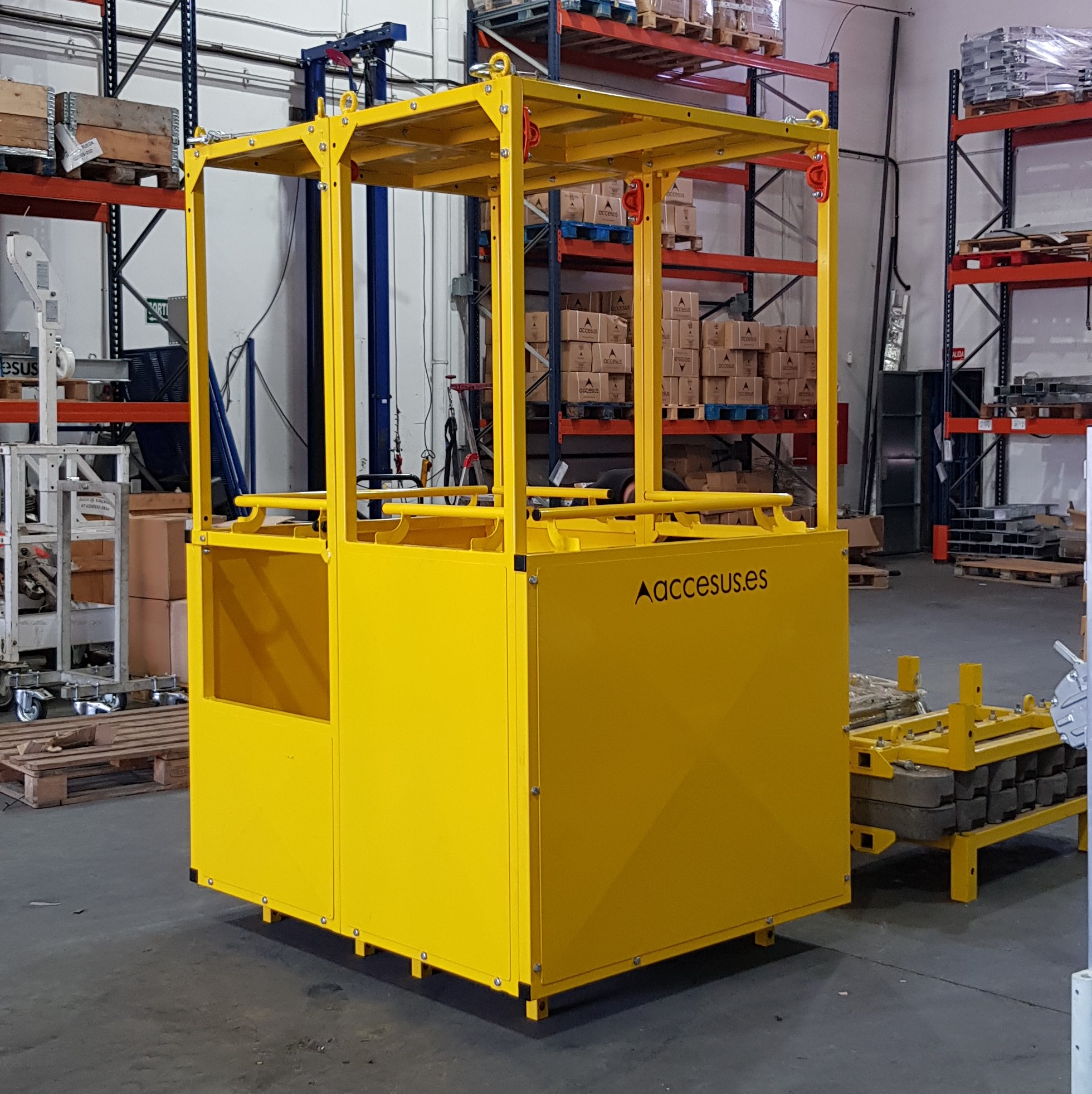
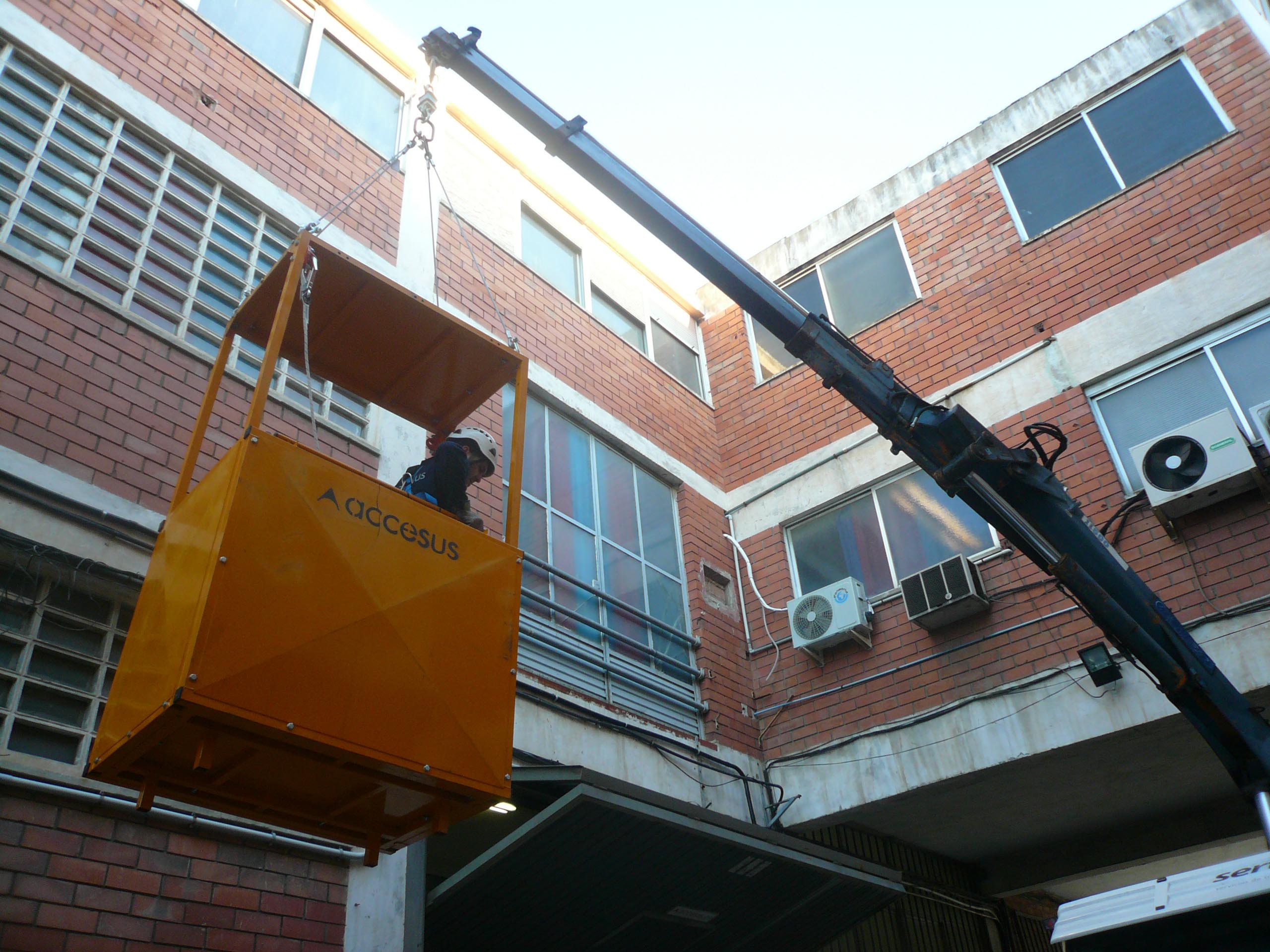
BIBLIOGRAPHY
FT-373 Technical note for Suspended Crane Baskets



